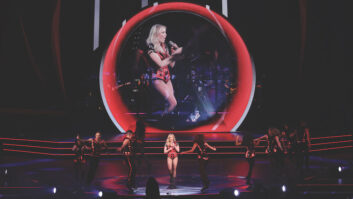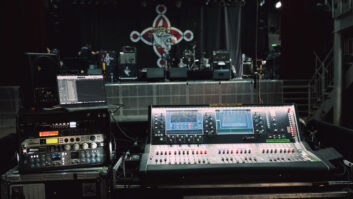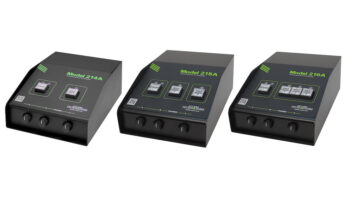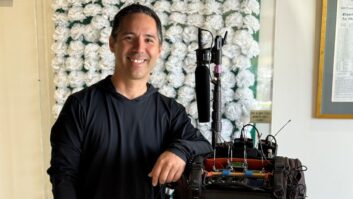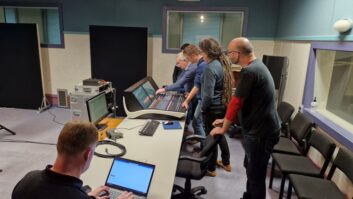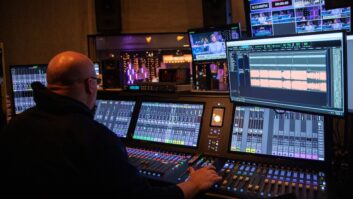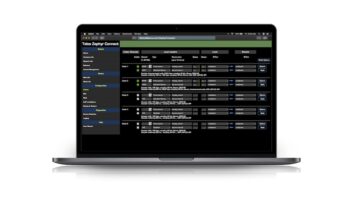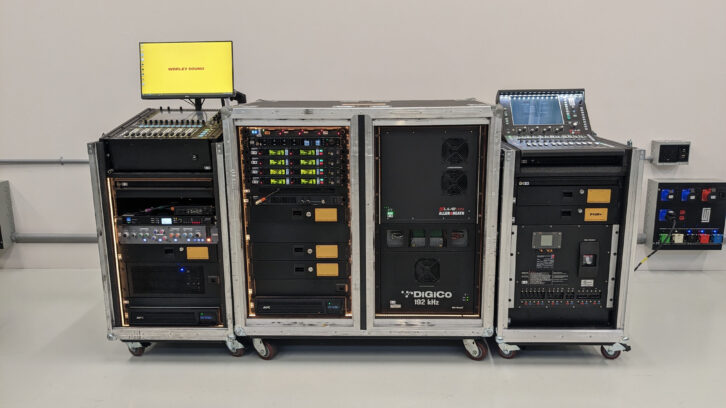
Our look at the industry’s efforts to create more efficient touring packages concludes with a look at consoles; don’t miss Part 1 which explored loudspeakers.
COMPACT CONSOLE AND CONTROL
Having worked for nearly 15 years as a freelancer and with Rat Sound and 3G, including as a system tech with Depeche Mode, Tame Impala, alt-J and others, Tom Worley returned to his native New Zealand during the pandemic to rethink his career. In 2021, he set up Worley Sound, a new touring sound company specializing in FOH and monitor control packages, now based in Nashville.
As Covid-19 became old news, touring sound professionals thought they would get back to 10-truck tours. “But they quickly realized that 10 trucks now cost the same as 15 trucks. Things have changed, and you have to react to the market,” says Worley, who currently has gear out on three global tours, plus several shorter, national tours.
Worley Sound has 20 consoles in inventory, 12 of them DiGiCo desks. Four of those consoles are compact, 12-fader SD11s. “They’re always out on bus tours,” he reports. “People are conscious of space and price, but they still want a DiGiCo. They might not get all the faders, but they can still have their flexibility and virtual soundcheck in a very small footprint and still sound amazing.”
Worley Sound’s Nashville location was chosen with affordability and logistics in mind, he also reveals. With his previous West Coast employers, clients had to pay to transport a control package or system to the tour’s first show, which might be on the opposite coast. But now, Worley says, “Our first question is, ‘Where’s your bus coming from?’ Because a lot of buses come from Nashville and Alabama.”
Although it’s a generalization, it does seem that the new generation of live sound engineers don’t necessarily want or need a large-format console to mix their artists. “They want a compact system that’s easy to set up and pack down,” Worley agrees. “They want a flexible system that allows interconnectivity with other devices, whether that’s Waves, Dante or MADI. And they want something affordable. We have to be conscious of air freight costs and truck space, because if they want to carry something, then we need to find a way to make it more affordable.”
SMALL-FORMAT FILLS ARENAS
Monitor engineer Salim Akram, together with FOH engineer Drew Thornton, famously used a pair of 12-fader Allen & Heath dLive C1500 desks on Billie Eilish’s sold-out world tour back in 2019. “You can take an arena show, a quality front of house and monitor package, and pretty much put it in a fly pack,” says Akram, who also tours with Finneas and is currently mixing monitors for Dijon on the Re:Set concert series.
There are two primary reasons to carry a small-format console, he believes: “Cost and consistency. It allows you to remove the variables of using a different house console every day. And I can bring the console home and prep it on a four-foot table.”
Outside of fly dates, or on a tour without budget constraints, Akram will invariably opt for a larger desk. Yet the C1500 packs much the same punch since the MixRack brain is common to all dLive systems; only the control surface is different. “The limitation, obviously, is faders and screens,” he says.
Akram, who owns the lighter CTi1500 version, constructed from titanium, has mixed shows with up to 100 inputs on the desk. With any show, the trick is to determine which are the primary sources or groups that need to be on the 12 faders, he explains. “I think the biggest workflow for me is finding how to get something, metaphorically speaking, from the basement to the top floor in a minimum of two key presses.” During rehearsals, it will become obvious which inputs are set-and-forget, he adds, and they can go on another fader bank.
“Once my mixes and scene automation is set, you shouldn’t really have to be jumping around to different banks,” he continues. But if there is an issue, the DCA spill function will expand my grouped sources to the faders. “Just one press, and it pulls them up from under the hood. And I’m always on send-to-fader mode, so I can address whatever it is.”
Weighing just 25 pounds, and only 50 pounds with a suitable case, the CTi1500 won’t cost you in excess baggage fees, Akram comments, subject to the airline’s limits, of course. Following some U.S. dates with Finneas, he recalls, “We were able to take the entire monitor platform on an airplane to Australia, keep it under 70 pounds, and not have to pay overweight baggage fees anywhere—and use the same show file for consistency.”
